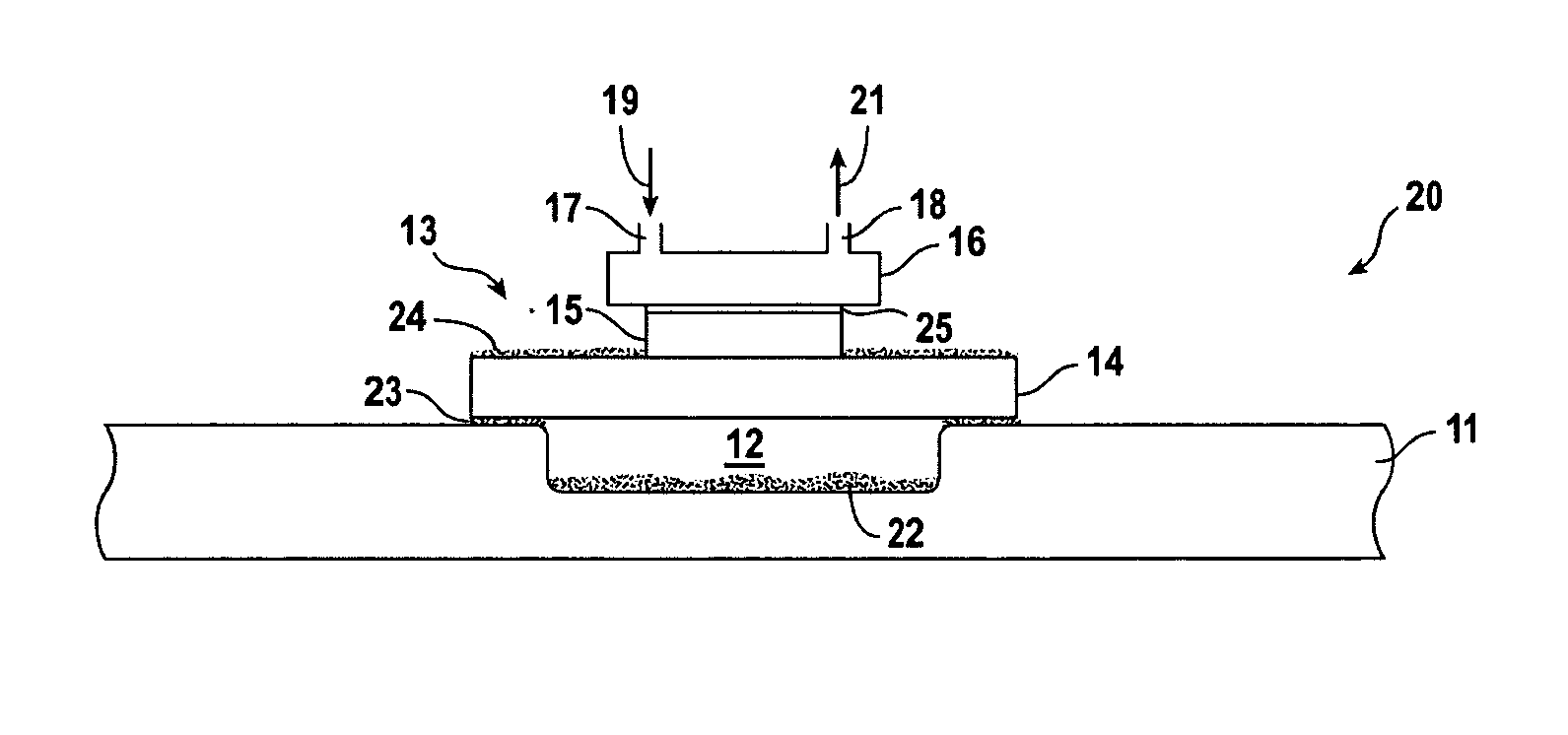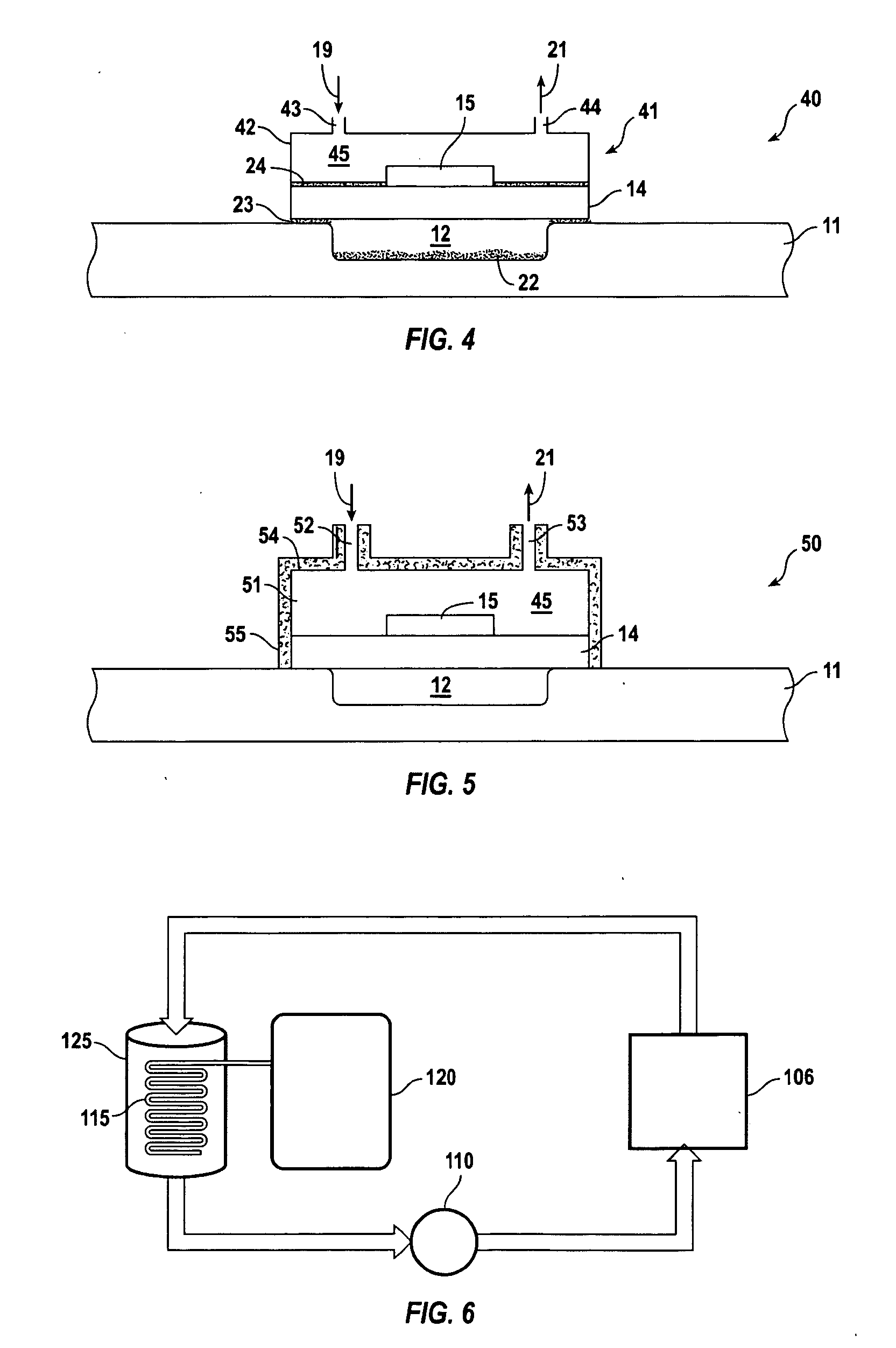Heat dissipation assembly for computing devices
- Summary
- Abstract
- Description
- Claims
- Application Information
AI Technical Summary
Benefits of technology
Problems solved by technology
Method used
Image
Examples
Embodiment Construction
[0015] Turning first to FIG. 1, a cross-sectional view of a relevant area of a computing device 10 is shown. Specifically, motherboard 11 is depicted in partial cross-section supporting a microprocessor CPU 13 consisting of substrate 14 and die 15. Microprocessor CPU 13 can be applied to supporting motherboard 11 either through a pin connection or by a flush connection over indented region 12. That portion of motherboard 11 supporting microprocessor CPU 13 is shown in top plan view in FIG. 3. In this embodiment, pin receiving socket 31 having openings 32 for receiving the pins of substrate 14 (not shown) surrounds indented region 12.
[0016] Turning back to FIG. 1, a schematic depiction of a current cooling method commonly employed in laptop and desk top computers is shown. Specifically, fan 80 is caused to rotate by connecting a shaft to a motor (not shown) which can either be constantly engaged or periodically engaged through activation prompted by a thermo-couple or other thermal ...
PUM
 Login to View More
Login to View More Abstract
Description
Claims
Application Information
 Login to View More
Login to View More - R&D
- Intellectual Property
- Life Sciences
- Materials
- Tech Scout
- Unparalleled Data Quality
- Higher Quality Content
- 60% Fewer Hallucinations
Browse by: Latest US Patents, China's latest patents, Technical Efficacy Thesaurus, Application Domain, Technology Topic, Popular Technical Reports.
© 2025 PatSnap. All rights reserved.Legal|Privacy policy|Modern Slavery Act Transparency Statement|Sitemap|About US| Contact US: help@patsnap.com



